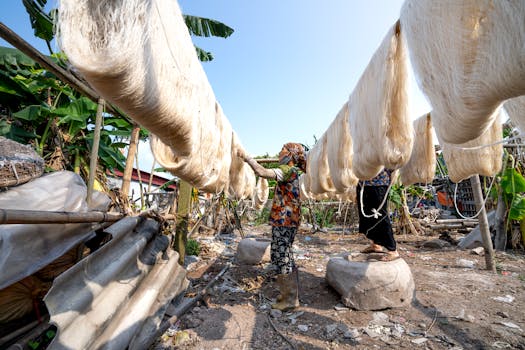Empowering Communities: The Role of Women in Africa’s Fiber Production

Empowering Communities: The Role of Women in Africa’s Fiber Production
Empowering Communities: The Role of Women in Africa’s Fiber Production is a crucial aspect of African development, as it not only contributes to the growth of local economies but also promotes community empowerment. Women, in particular, have been instrumental in the fiber production industry, leveraging their skills and knowledge to create sustainable livelihoods and drive social change.
The fiber production industry in Africa is diverse, encompassing various types of natural fibers such as cotton, sisal, and hemp. Women’s participation in this industry is multifaceted, ranging from farming and harvesting to processing and trading. By engaging in these activities, women are able to generate income, improve their livelihoods, and contribute to the well-being of their families and communities.
The Significance of Women’s Participation in Fiber Production
The significance of women’s participation in fiber production cannot be overstated. Women’s involvement in the industry has been shown to have a positive impact on community development, as it enables them to access new markets, develop new skills, and build social networks. Furthermore, women’s participation in fiber production has been linked to improved health outcomes, increased education, and reduced poverty.
One of the key benefits of women’s participation in fiber production is the creation of employment opportunities. By engaging in fiber production, women are able to generate income and support their families, reducing their reliance on external sources of income. This, in turn, has been shown to improve household well-being, as women are able to invest in their families’ health, education, and nutrition.
Challenges Faced by Women in Fiber Production
Despite the many benefits of women’s participation in fiber production, there are several challenges that women face in the industry. One of the primary challenges is access to resources, including land, credit, and technology. Women often lack the resources and support needed to engage in fiber production, making it difficult for them to compete with larger-scale producers.
Another challenge faced by women in fiber production is the lack of recognition and support for their contributions. Women’s work in the fiber industry is often undervalued and invisible, making it difficult for them to access markets, secure funding, and build partnerships. This lack of recognition and support can limit women’s ability to scale up their production and increase their incomes.
Initiatives to Support Women in Fiber Production
There are several initiatives underway to support women in fiber production, including training programs, credit schemes, and marketing initiatives. These initiatives aim to address the challenges faced by women in the industry, providing them with the resources and support needed to succeed.
One example of such an initiative is the African Women’s Fiber Production Network, which aims to promote women’s participation in the fiber industry and provide them with access to markets, credit, and technology. The network also provides training and capacity-building programs, enabling women to develop the skills and knowledge needed to compete in the global market.

